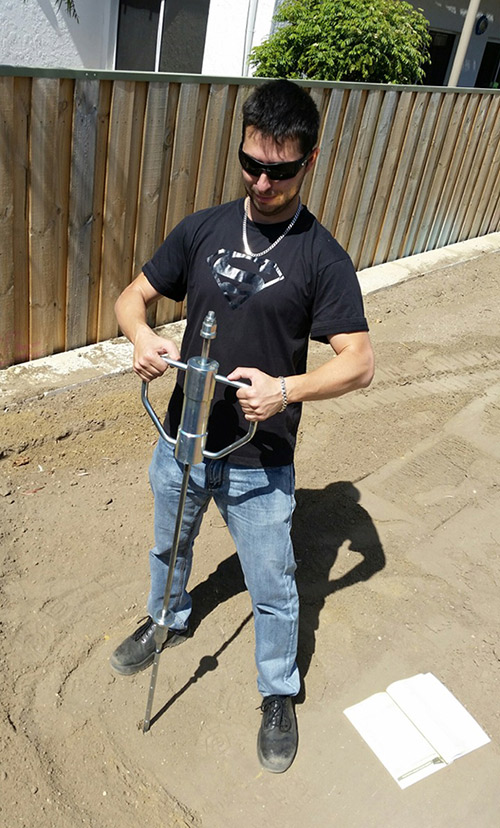The Perth Penetrometer was developed to replace time-consuming field density testing. The introduction coincided with the change in footings. Concrete strip footings and "slab on the ground" construction replaced traditional limestone block strip footings with suspended timber floors. Slab construction requires uniform compaction of the whole site so vibratory equipment was brought in to compact the sandy soil sites. A reliable method of testing the compaction was then needed to ensure the sand pad was ready for construction of the house.

Perth Soil Types
Perth’s metropolitan area is predominantly sand with little clay content unlike much of the east coast of Australia. Where the sand gives way to more clay and other soil types near the Darling Escarpment, sites are often excavated and a soil pad brought in.
The variation in sand in the Perth area was described in the Soil Association of the Swan Coastal Plain (Bettenay, McArthur, Kingston 1960) as the following:
Quindalup - calcareous dunes along the coast
Cottesloe - yellow and brown over limestone, Spearwood dune system
Karrakatta - leached yellow and brown over limestone Spearwood dune system
Bassendean - grey highly leached, dunes.
How does a Perth Penetrometer Work?
The 9kg Perth Penetrometer is dropped from a constant height onto the test soil so that the depth of the resulting hole can be measured. The measurements indicate whether the soil is strong (compacted) enough to build a house. The moisture content of the soil can also be evaluated. If the soil passes the tests a compaction test certificate is issued so that building can commence.
History of Perth Penetrometers
The introduction and development of the Perth Penetrometer were detailed in a thesis paper written by B. Clegg, Senior Lecturer, Civil Engineering, University of Western Australia in 1979.
The first penetrometer consisted of an 'E' type 33.3 mm diamond drill rods fitted with a 38.1 mm diameter 90° cone driven by a 32.3 kg mass dropping 457 mm. This penetrometer was calibrated in a 3 m length of 495 mm diameter pipe.
In the 1960's the Department of Civil Engineering completed all commercial soil testing in Perth. When demand increased for field density tests in sand pads they needed a way to perform faster testing to keep up with the population growth and new housing construction.
The Main Roads Department had acquired the Country Roads Board of Victoria’s Scala Penetrometer. The 9kg device was much more portable than its 32 kg predecessor and only needed minor modifications of a blunt end on the 16 mm diameter rod driven by a 9 kg mass with a dropping height of 600mm. One of the first projects for the new penetrometer was the 1962 Empire Games Village in City Beach. The Perth Penetrometer has changed little since its introduction and remains an effective method for compaction testing today.
Penetrometers aren’t just used for soil compaction testing prior to construction. Similar penetrometers are used by space probes to research the moisture content on other planets as well as in sport for checking on the moisture content of cricket pitches and horse racing tracks.
If you require compaction testing on any block of land in Perth, contact Advanced Building Engineers on 9382 8888 or email abewa@abewa.com.au.